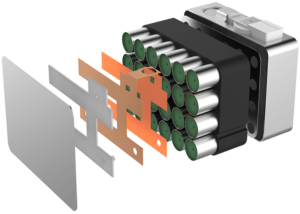
Validating the safety features of its patented lithium-ion (Li-ion) technology, Cadenza Innovation today announced that verifies that the company’s supercell battery architecture stops propagation when thermal runaway is induced inside the battery itself.
By doing so, Cadenza’s technology solves a global industry safety issue seen in multiple battery fires and explosions in Arizona, South Korea and elsewhere. In those cases, failure analyses in public reports point to battery-initiated fire propagation.
This marks the latest validation earned by Cadenza’s technology. Specifically, UL9540A evaluates the fire safety hazards associated with propagating thermal runaway and the amount of flammable gases created during such thermal runaway. The Cadenza supercell, when subjected to the UL9540A test, does not exhibit cell to cell fire propagation seen in other systems. In addition, the volume of flammable gases is significantly reduced when compared to other battery systems in the industry. Other battery systems must rely on costly fire mitigation equipment such as expensive detection and industrial-grade extinguishing or venting systems to stop propagation and potential explosions. This adds to project costs and is inherently less safe.
Achieved by only a handful of companies, results in compliance with the rigorous UL9540A evaluation process underscore the supercell as a compelling, straightforward solution for safe, grid-scale energy storage system installations. This is especially critical as systems become increasingly larger and given unprecedented global demand for systems that equally prioritize safety and cost savings for utilities, their customers and energy storage systems integrators alike. Among a range of initiatives to improve grid resiliency, rapid adoption rates are being fueled by utilities seeking to replace legacy fossil fuel-based peak shaving operations with more environmentally sustainable battery energy storage systems. Notably, the supercell’s unique design helps reduce the balance of system costs which, in turn, paves the way for more cost-effective energy storage installations.
According to industry research firm Guidehouse Insights, the U.S. utility-scale energy storage market has been the world’s largest since 2015 and is expected to hold that position through 2023. The firm added that “Li-ion is the choice technology among project developers and system integrators” and “is expected to account for 85% of newly installed energy capacity.” Similarly, Wood Mackenzie Power & Renewables anticipates the annual demand for Li-ion batteries will grow by nine-fold for energy storage by 2022. Moreover, while innovation in battery technologies remains vital, Li-ion is expected to remain the market share leader for many years to come due to a combination of advancements in performance, design and materials, established global supply chains, and extensive and expanding manufacturing facilities.
Available for license to manufacturers, Cadenza’s supercell represents industry bests in safety, low cost and high-performance. The architecture allows systems integrators to greatly reduce traditional safety measures, freeing them instead to focus on issues other than batteries with respect to fire mitigation. Facilitating indoor installations and urban deployments, the supercell significantly lowers battery energy system integration costs. Cadenza targets the commercial and industrial (C&I) and utility markets and will also commercialize solutions for the home storage, uninterruptible power supply (UPS) and telecommunications markets.
Helping reduce soft costs associated with facilities design and permitting, the supercell also contributes to lower operations and insurance costs. For example, the supercell’s non-propagation technology prevents fires while allowing for the quick and efficient replacement of the module in question. This ensures optimal safety for utility personnel and first responders while precluding the direct and indirect expenses and downtime resulting from fires and explosions (for example, a facility filled with soot/water requiring costly cleanup along with the removal and reinstallation of the battery systems).
Battery proof of concept testing in New York
New York State has enacted the most ambitious climate protection legislation in the country, including a mandate to achieve 70% renewable energy and deploy 3 GW of energy storage on the electric grid by 2030. Cadenza was awarded funding in 2018 from the New York State Energy Research and Development Authority (NYSERDA) for a demonstration project to further those nation-leading clean energy goals. Going live later this year at the offices of the New York Power Authority (NYPA) in White Plains, the largest state public power organization in the nation, the demo will be a stand-alone system that includes a rack-mounted 200 kWh, 50 kW battery storage unit featuring Cadenza’s supercell.
Working closely with Cadenza executives and engineers for several years, NYPA staff have actively participated in critical safety tests in addition to reviewing use data. This collaboration has been invaluable for both organizations. The Cadenza system, following deployment by NYPA to support operations at its headquarters operation, can then be replicated at other businesses.
“NYPA is pleased to collaborate with Cadenza Innovation in testing and evaluating this promising battery technology, which could be a real game changer in the promotion of safety and cost savings as more renewable resources are integrated into our energy supply,” said NYPA President and CEO Gil C. Quiniones. “New York State has the nation’s largest energy storage target and developing new clean air technologies will be vital as we continue the fight against climate change and work to transform the electric grid.”
“Cadenza Innovation’s development of this cutting-edge battery technology will help to advance a safe, sustainable grid of the future that lowers carbon emissions as the state advances toward meeting its goals for 70% renewable energy by 2030 and carbon-free electricity by 2040. Governor Andrew M. Cuomo’s nation-leading climate and clean energy agenda continues to prioritize investments in clean energy technologies that deliver benefits to all New Yorkers – including energy affordability and reliability – while creating cleaner, healthier communities across the state,” said NYSERDA Acting President and CEO Doreen M. Harris.
“The energy transition is accelerating around the world, increasingly driven by new technologies and true working partnerships between forward-thinking startups and the public sector,” said Cadenza Innovation Founder and CEO Dr. Christina Lampe-Onnerud, who serves as chair for the World Economic Forum’s Global Future Council on Energy Technologies. “Cadenza’s collaboration with NYPA and NYSERDA is a great example of the progress that can be made when parties come to the table with a commitment to share what they know and have their customers’ best interests at heart.”
This week at NY-BEST’s 10th Annual Capture the Energy Conference and Expo, Dr. Lampe-Onnerud will deliver the feature presentation, “What’s the Current Temperature? Climate Change and the Clean Energy Transformation.” Taking place Thursday, August 6 from 1:35-1:55 EDT, this “Debrief from Davos” will recap the most important discussions/sessions from the World Economic Forum’s 50th Annual Meeting that are especially relevant to energy storage and addressed climate change, sustainability and clean energy transformation. Additionally, Dr. Lampe-Onnerud will explore the innovative technologies, new business models and partnerships that are expediting the transition from fossil fuel dependence to renewable energy reliance from a global perspective.

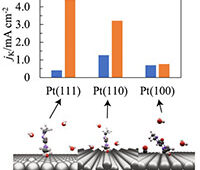
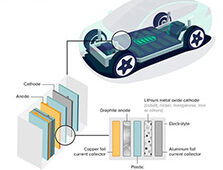
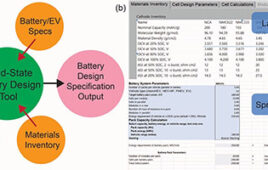
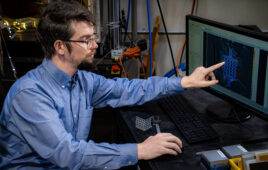
Tell Us What You Think!